How to clean your bike
Here's the lowdown on how to keep your road bike clean and running smoothly for years to come

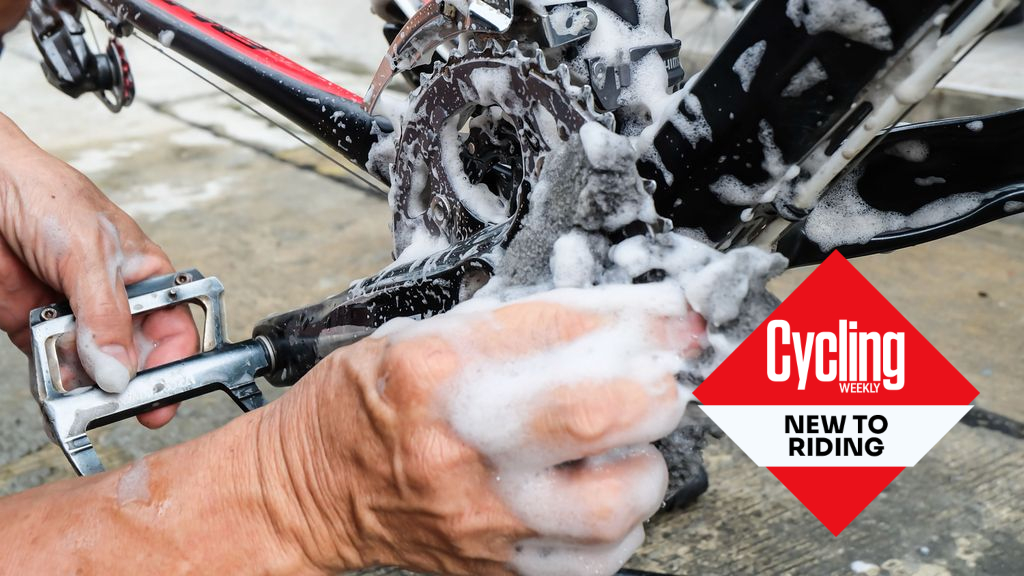
This article has been freshly updated as part of our 'New to Riding' week, running from March 10 to March 17, with a special focus on tips, tricks and inspiration for new riders.
Keeping your bike clean can feel like an arduous task, especially when you come back from a long ride and all you want to do is eat all the food, take a hot shower and sit down to relax for a while.
The reality is though, if you want to keep your bike looking and sounding as good as new, you need to put in a little effort. If you don't, eventually you'll be hearing a squeak from your chain, the clunks of poorly shifting gears and even potentially seized components.
Cleaning your bike doesn't have to be such a drag, or take as long as you think it will, so long as you have everything you need and make it part of the routine. Read our step-by-step guide to an efficient and effective bike clean.
How to clean your bike: step-by-step guide
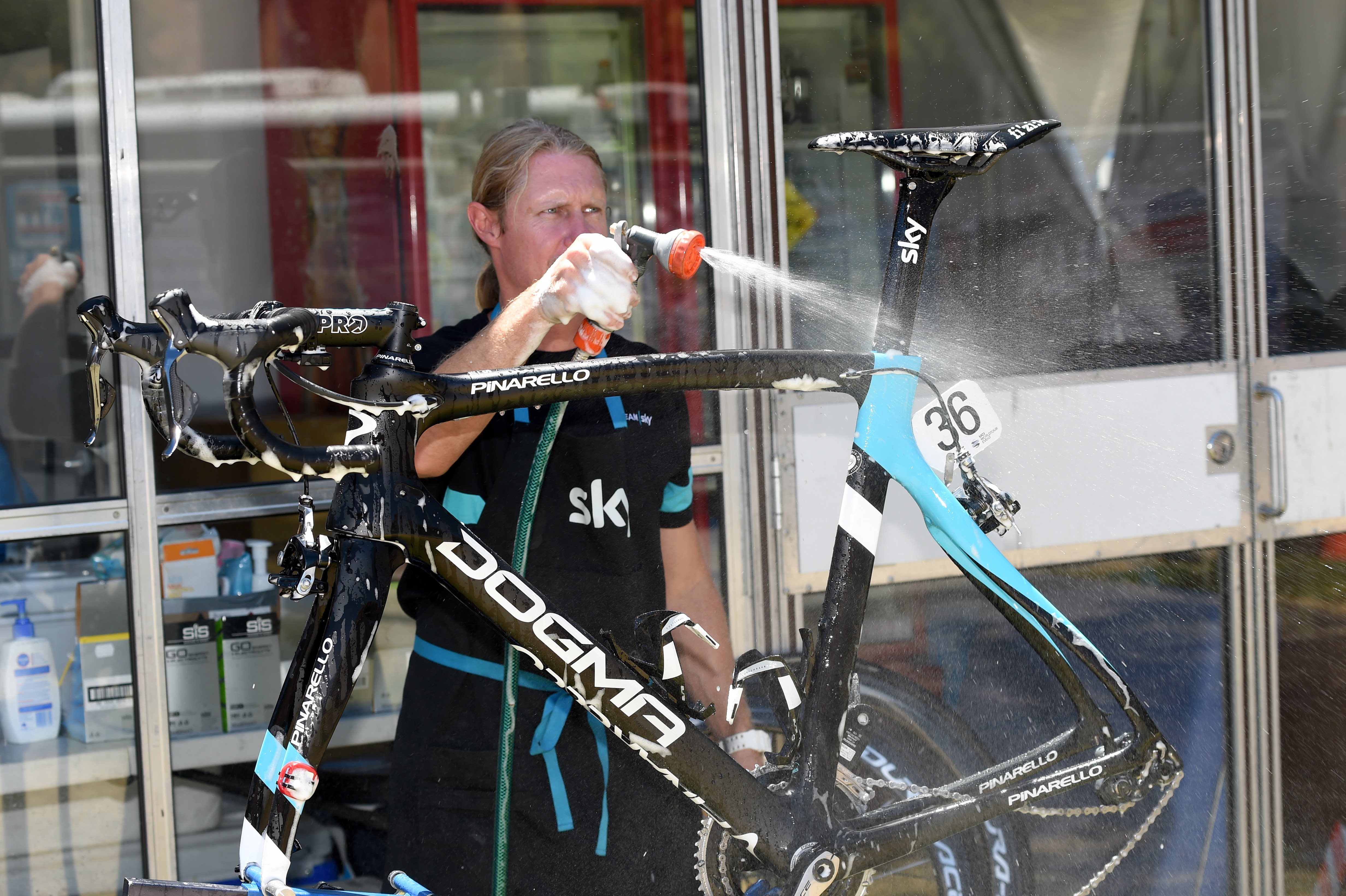
Rinse the frame down before applying bike cleaning products
1. Rinse the frame down
Start by giving the frame a basic wipe. This can be with a sponge and bucket of water or a hose — just don't use a high pressure washer as this will force water into the bearings.
Spray the bike with a bike cleaning product, and then, with more clean water, use a soft bristled brush to give the bike a scrub.
Don't be tempted to substitute the bike cleaning product and soft brush with washing up liquid and a kitchen sponge — this can result in a scratched or even colour faded frame.
The latest race content, interviews, features, reviews and expert buying guides, direct to your inbox!
2. Use degreaser on the derailleurs and chain
Next, spray the derailleurs and chain with a degreasing agent and give them a good (but gentle) scrub. You might find this easiest with the wheel still in the bike or, as you'll need to take the wheels out later anyway, a chain-keeper will help to keep tension in the chain.
3. Use degreaser on the cassette and chainrings
Spray more degreaser over the chainrings and cassette and give them a scrub. Using a gear brush really helps you to get into the cassette cogs.
If the chain still looks grimy, you can use a chain cleaner: simply fill the unit with a degreaser, snap it on and rotate the pedal backwards to feed the chain through. Dispose of the degreaser safely when you're done.
4. Clean the braking surface and pads
You should still clean the rims of your bike whatever braking system you're using. But for rim brakes, it is particularly important to give the braking surface a good wash and wipe – and then repeat for the pads, checking for any debris that might have wedged itself in.
For disc brakes, make sure the cleaning product you're using is suitable for the job. Some general purpose bike cleaners are, but if yours isn't, make sure to use a dedicated disc brake cleaner or some isopropyl alcohol to wipe down the rotors and spray onto the brake pads. If you're getting some squealing when you pull the levers, a good clean of the discs and pads may be all that's needed. Be careful not to get any other products or grease on the pads or discs as it's likely to cause contamination, and, consequently, poor performance and noise.
5. Rinse the frame, dry and lube the chain
Rinse the soap suds off the bike, dry the chain with an old rag — you can spin the pedal crank backwards first to remove excess water from the chain and cassette — and apply chain lube to the chain, running through the gears to distribute it onto the cassette cogs, and pivot points on the derailleurs.
What you need for cleaning your bike
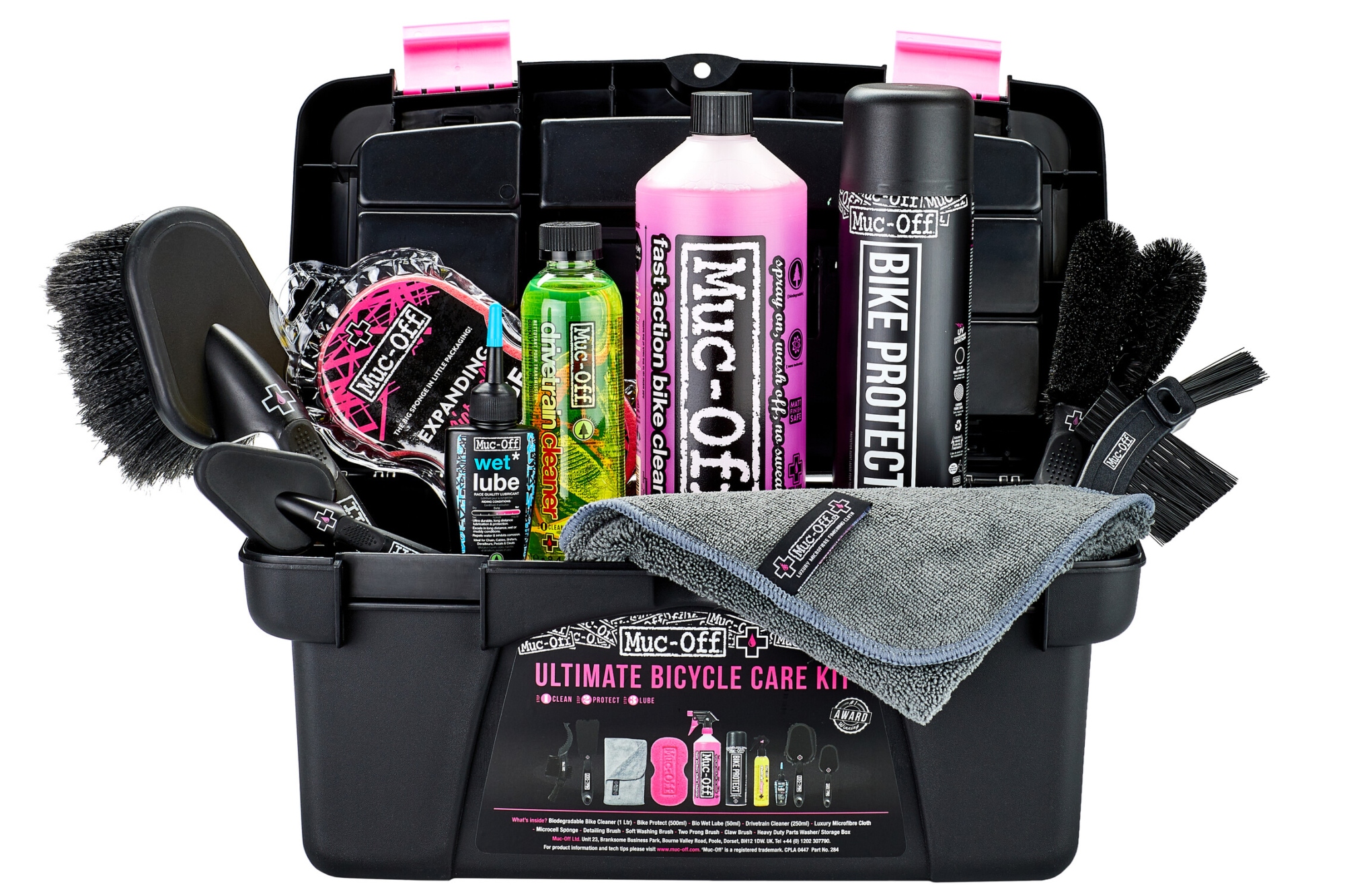
You can purchase a complete bike cleaning kit
To clean your bike effectively, there are essentially six broad categories of equipment you'll need. The good news is, you'll likely already have half of them around the home and everything else can be found quite cheaply if you shop around.
- Brushes
- Cleaning fluid
- Degreaser
- Lube
- Towel
- Bucket
But if you're time-pressed — or simply prefer simplicity — there is always the option to go in for a bike cleaning bundle from brands such as Muc-Off, Bike Hut or Weldtite. These kits include everything you need in one easy package.
Bike cleaning brushes
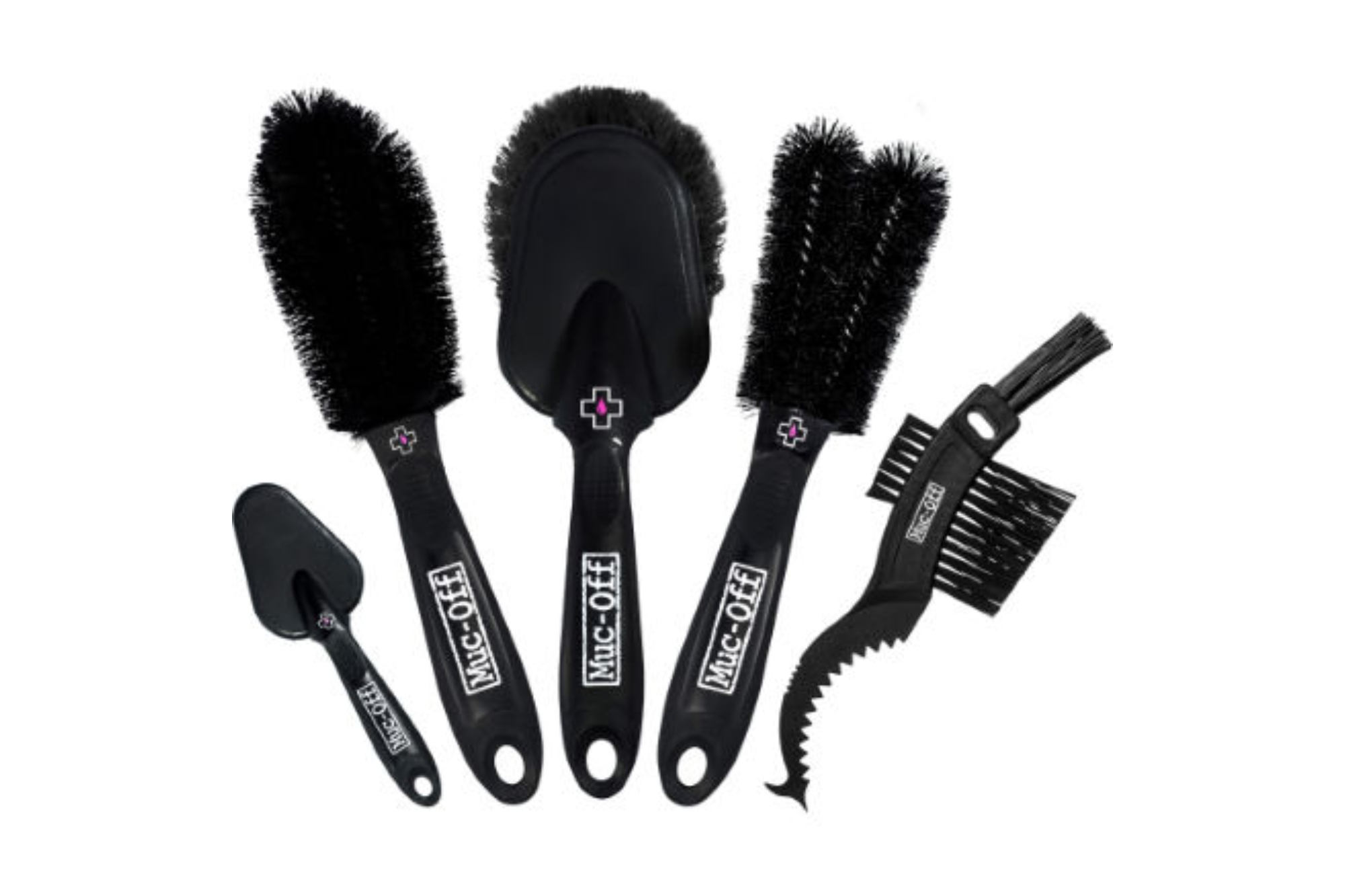
A set of Muc-Off brushes allow you to get into every part of your bike
To really clean out all the nooks and crannies of a bike, specialist brushes do make the job a lot easier — whether that’s getting in between the cassette sprockets, around the jockey wheels or any parts of the frame prone to collecting dirt. Larger, softer brushes really help with quickly cleaning down large areas of the frame without causing scratches.
Cheaper brushes are, of course, kinder on the wallet initially. But investing a little more can get you a higher quality product, which will see the brushes last for longer.
Bike cleaning fluid
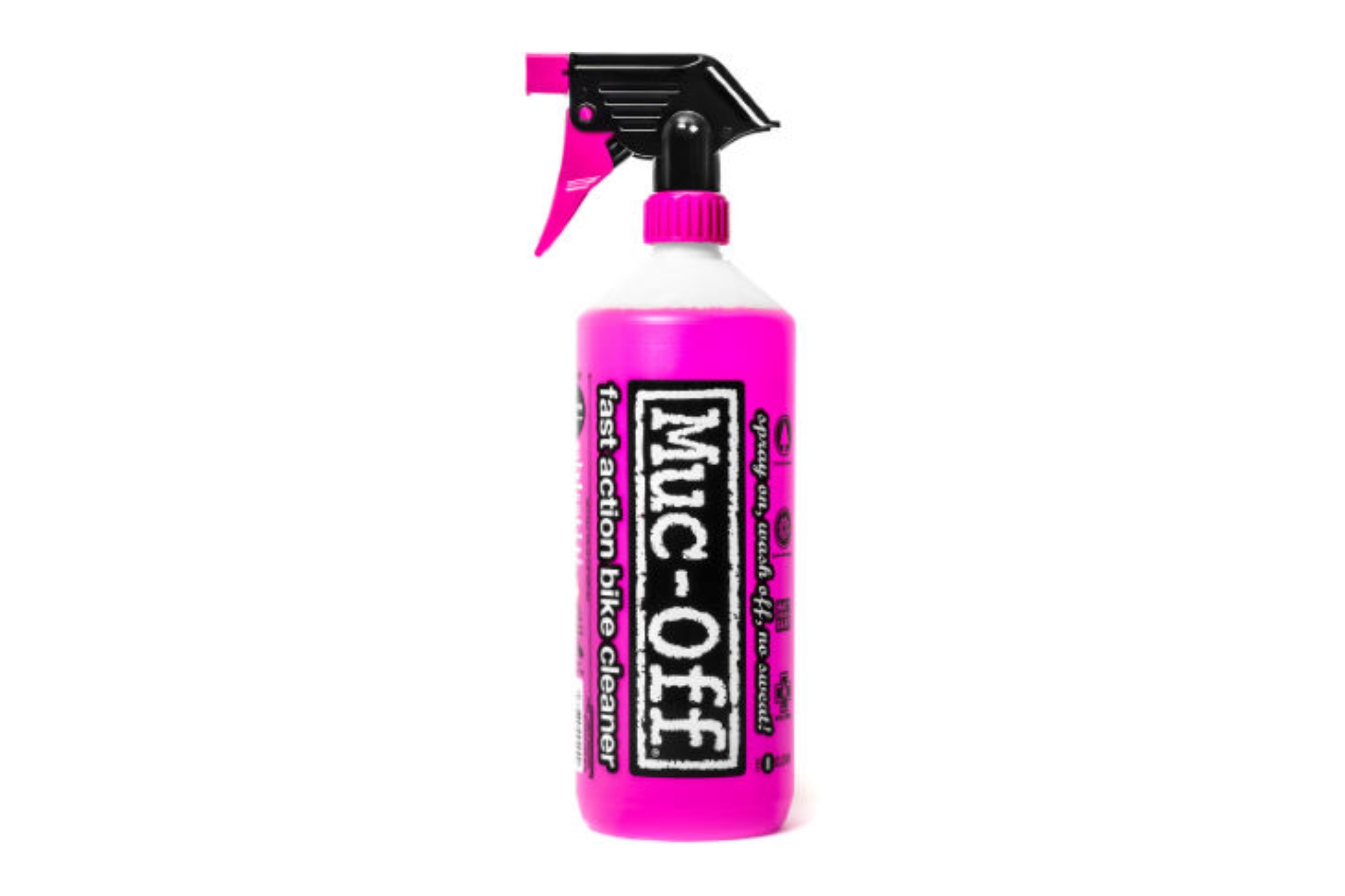
Use a dedicated bike cleaner
There are a whole range of bike cleaners out there which promise many different things. One point we like to check is whether the product is safe to use on disc brakes — there’s nothing wrong with having multiple products for multiple purposes, but cutting down on clutter does make things easier.
Likewise, some concentrated bike cleaners can double up as degreasers in their undiluted form – saving yet another cleaning product there. Buying concentrates tends to be easier on the wallet and better for the environment too, as it significantly reduces the volumes of water being needlessly shipped around when you’re adding it yourself at home from the tap.
Sticking with environmental concerns, another quality we like to look for is how friendly the cleaning product is to wildlife. As there is the choice, it’s always better to go with cleaners which are specifically formulated not to poison water ways.
Bike degreaser
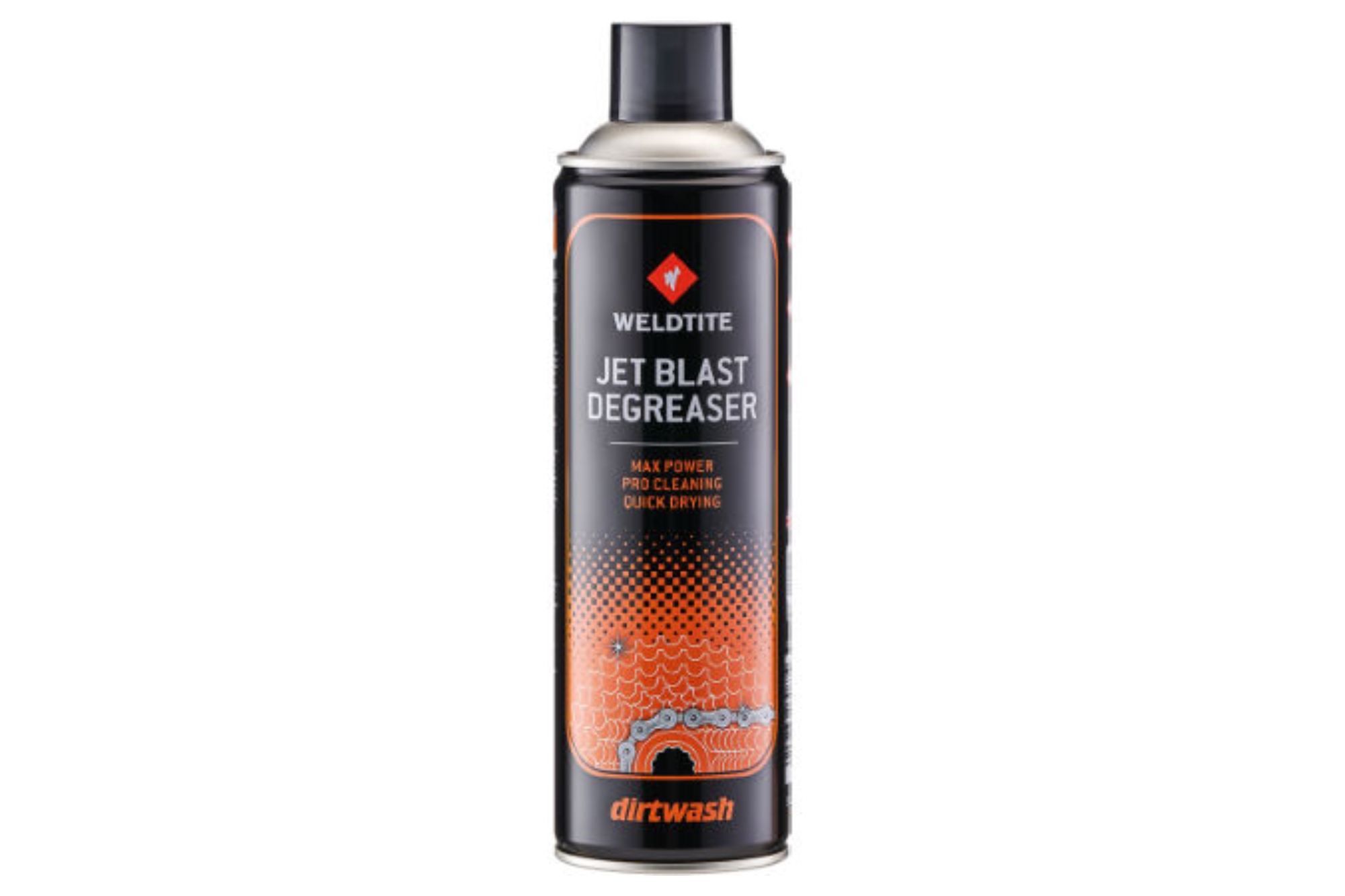
Bike degreasers remove grease and grime from the drivetrain
To cut through the grime of a chain, a dedicated degreaser is often needed. It’s typically cheaper and more environmentally friendly to get refills and use a squirty bottle, but aerosols do make it much easier to reach those hard-to-get-at places — just make sure not to get it in your bearings.
As with general purpose cleaners, there is often the option to go for a bike degreaser specifically formulated to minimise the ecological impact, which is always a good thing.
Chain lubricant
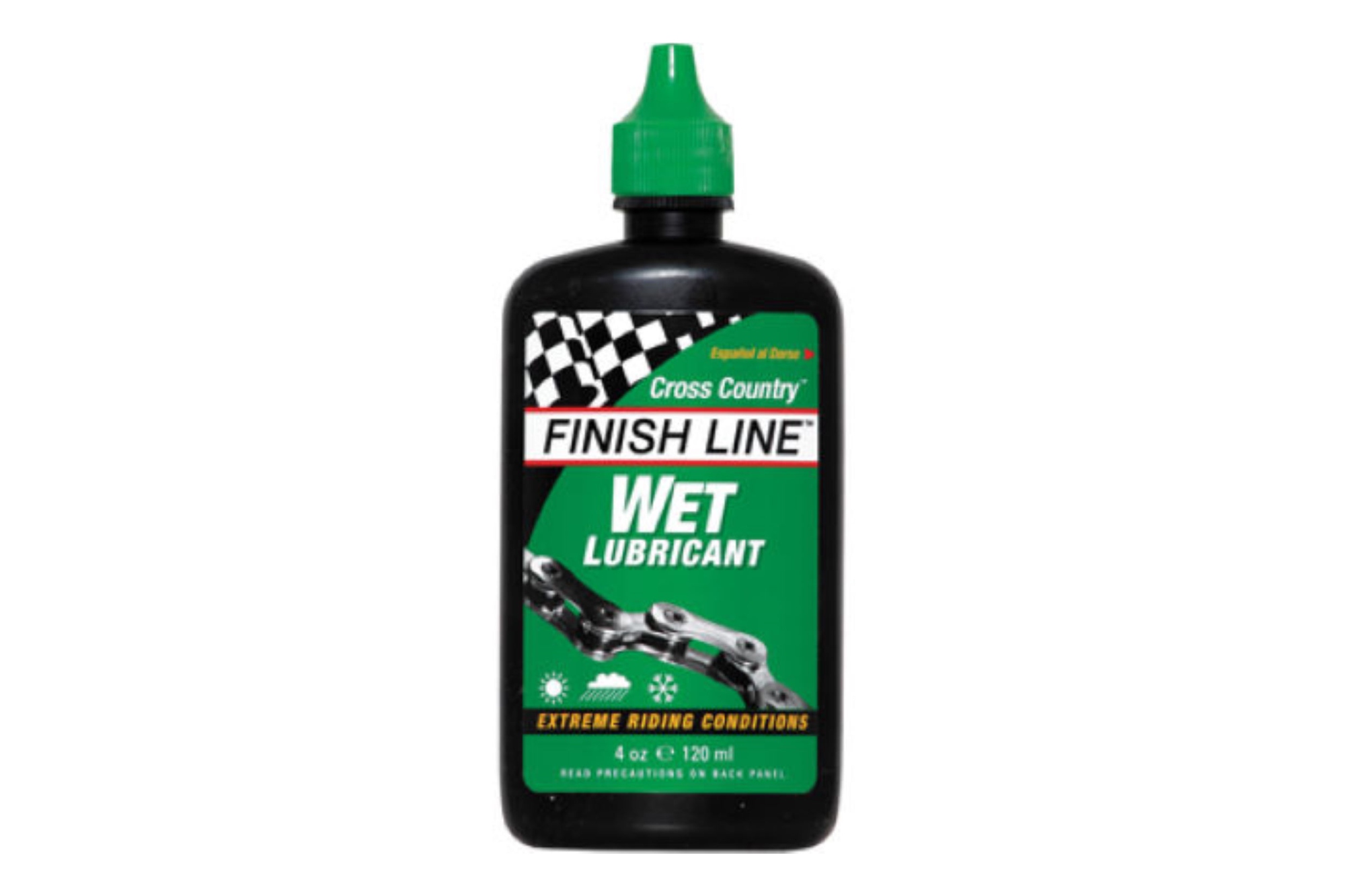
Choose wet lubricant for winter riding
After stripping all the gunk off your chain, the next step is to add some chain lubrication to keep it running smoothly, efficiently, and to protect against rust. Depending on the conditions, you’ll either want to use a wet lube or a dry lube.
Wet lubes, as their name suggests, are best for wet conditions. They cling tenaciously to the chain and are much more resistant to being washed off than a dry lube. The downside is, in dry conditions, they also have a tendency to collect dust and debris, making a gritty paste that’s no good for the longevity of your drivetrain and is a bit of a pain to clean.
Dry lubes, on the other hand, are best used in dry conditions. A good quality one will repel dust, keeping your drivetrain squeaky clean. They also tend to be slightly more efficient than wet lubes, saving you a few watts. The downside for dry lubes is that they can be quickly washed off in wet conditions, leaving you with an unprotected chain.
Towel

A microfibre towel effective removes streaks from your frame after cleaning
The final step to cleaning your bike is drying it off, removing any water that might cause streaky marks or corrode parts of your bike. A microfibre cleaning cloth is the best tool for this job, as they don’t leave any unsightly lint in their wake. You can get ‘bike-specific’ ones, but you’ll save a lot of money simply going for an automotive or general cleaning set – they are essentially the same thing. Alternatively, use a clean, lint-free rag.
Bucket
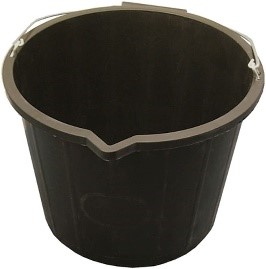
A bucket is a handy bike cleaning accessory
You probably already have a bucket you can use, but one can be bought for a reasonable price if not, and makes cleaning a lot easier. You could even have more than one: for soapy water, for plain water and to carry around your cleaning supplies.
The bucket doesn’t have to be anything fancy and between 5 and 10 litres is a good volume to aim for.
Bike cleaning FAQs
Can cleaning your bike properly negate the need for a winter bike?
A lot of riders like to have a winter bike set up for trudging through the driving rain and general muck involved in logging off-season miles. This bike will generally be made from a heavier and cheaper material than the summer one, and is often fitted with mudguards and more puncture resistant tyres.
The sad truth is that very often these hard working winter bikes receive half as much attention as our summer-ready race bike. This certainly shouldn't be the case: the long suffering mile-munchers are often experiencing twice as much hardship each week than what the thoroughbred race machines will come across all year.
Of course, it's always worth bearing in mind that if a rider can be dedicated enough to clean their bike after every ride, there's actually very little need to lug around the trusty winter steed in order to keep the summer bike in good condition.
Unless you're after the 'train heavy, race light' effect or simply want a more comfortable set up for the winter, with a proper cleaning routine in place you could skimp on a winter bike, leaving more cash for buying upgrades and more space for bike storage. Just make sure your bike is mudguard compatible for club runs or risk being very unpopular.
Whichever bike you choose to ride, a wipe after every ride and weekly deep clean will keep it all running smoothly regardless of what the weather throws at you both.
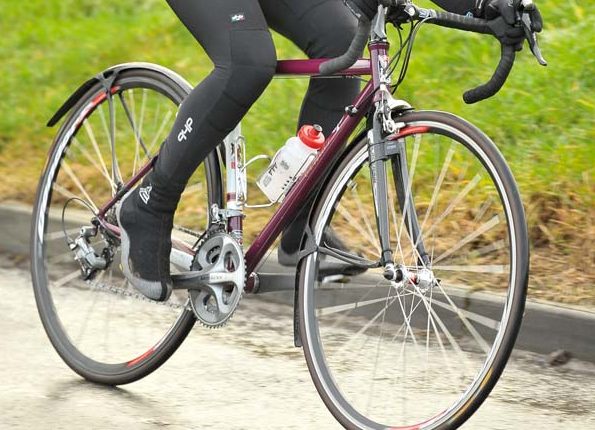
A traditional winter road bike wears mudguards and is often made of aluminium or steel
What products do I need to clean my bike?
Bucket - avoid a hose or jet wash.
Sponge or soft bristled brush (no kitchen scourers!).
Gear brush: this has bristles on one end and a serrated plastic on the other, for reaching between the cogs.
Chain cleaning tool if the chain is very dirty.
Bike cleaner, degreaser and chain lube.
Why should I clean my bike?
Cleaning your bike regularly will help keep it running smoothly, and it also gives you a chance to give the frame and components a quick once over, giving you a much greater chance of spotting potential problems (such as a crack in the frame or worn out components) before they become an even bigger issue.
How do I clean the chain on my bike?
As outlined in the steps above, the chain needs to be cleaned with a good degreaser. Spray or wipe it on, leave it to soak in, and then wipe off with a rag. Once you're happy that the chain is clean you can dry it with a clean rag and apply a thin layer of chain lube. Don't forget to give the same treatment to the chainrings and cassette.
How do I prevent the chain on my bike from rusting?
Dry it down properly after its wash, and apply chain lube. This will prevent rust from building up and will also keep the chain running smoothly.
Can I use WD40/GT85 to clean my bike?
WD40 and GT85 are both water dispersants. They will dislodge thick muck, grime and dirt — so are good to use when you've got a lot of built-up grease on your chain and gears, or a stuck part that's become rusted. It will get everything looking very shiny. It isn't a lubricant, so you do need to apply chain lube afterwards, and be careful not to get them near your rims or brakes.
Can I clean my bike with baby wipes?
Baby wipes are very mild and therefore won't do your bike any harm. They're great for giving your frame a quick wipe down between proper washes, especially if you don't have easy access to outside space. They won't get deep into built-up oil as a proper degreaser will, so baby-wipe washes shouldn't replace the proper treatment. We also wouldn't advise using them frequently as they're not environmentally friendly.
Can I use a pressure washer or hose to clean my bike?
You can - but it's really not a good idea. The jet will get dirt off the bike, but it'll also push water into the bearings and cause them to age more quickly.
How often should I clean your bike chain?
This really depends on the conditions you're riding in and the bike lube you use. Ultimately though, the better you look after your bicycle chain, the longer it will last and the quieter it will run.
In wet weather or on dirty roads, it's a good idea to give it a wipe down and re-lube after every ride — even if you're not fully cleaning your bike. Just a few drops of wet lube is sufficient.
In the drier months, your chain may not get so obviously dirty but it still picks up grit and dust and will dry out. Not cleaning or lubricating it regularly can cause excess wear. It's best to use a lighter dry lube in these conditions.
If you're unsure what to choose, read our guide to the best chain lubricants.
You can't really clean it too much, providing you remember to re-lube it thoroughly afterwards as using a degreaser will strip oils from within the chain, which must then be replaced.
Can I use washing up liquid or shampoo to clean my bike?
The short answer is no, you really shouldn't consider using anything other than a dedicated bike cleaner, as salts in other products can cause damage to more delicate bike parts if they're not washed off properly.
A cyclist for over 10 years, Cat started on the road and track, and now loves riding the trails and racing cyclocross. A freelance writer with many years of experience, when not writing or turning left at Herne Hill Velodrome, she likes to spend her time in the mountains, preferably on a bike or snowboard.
You must confirm your public display name before commenting
Please logout and then login again, you will then be prompted to enter your display name.